Our cabin, number 505, was on deck five. It was a quiet deck and very convenient: we went up one flight of stairs to access the bridge on deck six, and went down one flight of stairs to deck four to access the bar or go out onto the bow deck and load into Zodiacs. It was also easy to step out onto the stern deck for a quick photo opp or breath of fresh air.
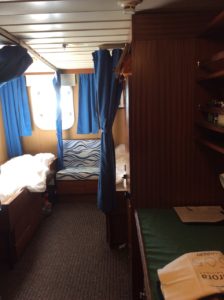
Our cabin was long and narrow but efficiently laid out with lots of built-in storage. I spent a lot of time sitting in my bunk reading and updating my journal, since the bridge was the only indoors public space with a good view.
Life aboard a moving boat is noisy. There’s engine noise, and sometimes noise from the crew or passengers moving around doing things, but also just a lot of creaking and rattling and groaning from the decks and bulkheads. Between the noise and the midnight sun, we were pretty sleep deprived by the end of the trip!
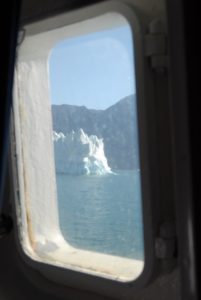
Our window, or porthole, sometimes framed a lovely peek-a-boo view, but it was hard to see anything other than sky unless you were standing right by it. It didn’t open, but it sure let in a lot of light.
To the left in the photo below are two hanging lockers for our jackets and the life vests we had to wear whenever we went out in the Zodiacs. The built-in desk and some small shelves above were lined with green stuff you put under area rugs to keep items we put there from moving around as the boat swayed. We kept our rubber boots and outermost rain gear, which we always wore in the Zodiacs, in the corner by the door. The glinty things mounted on the wall in the right third of the photo are glass tumblers for toothbrushing etc mounted in a custom rack; we hung our name badges on them to remind us which to use. Out of sight to the right is a locker with a bunch of shelves where we stored electronics, camera equipment, hats and gloves, etc. There were two chairs that stacked up for storage that I sometimes pulled out when I got tired of sitting in my bunk.

Here is the interior of Cabin 505 as seen from the padded bench near the window.
I never sat at the desk to write, although I probably would have used it if it had been under the porthole instead of staring at a blank wall.
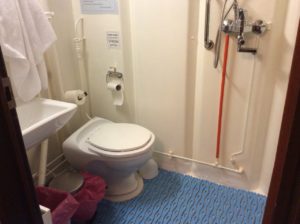
The bathroom was small but the layout was efficient. The bright orange pipe is the hot water for the shower — the orange served to remind us not to touch that pipe it was so hot! The shower drain is in the middle of the floor, and you pulled a shower curtain around you and the shower pipes to keep everything else in the room dry when the shower was in use.

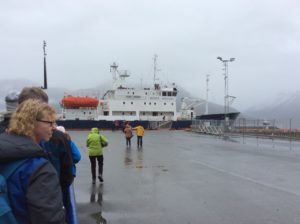
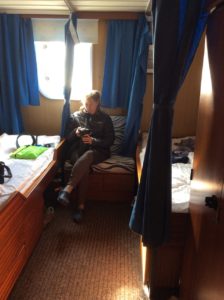

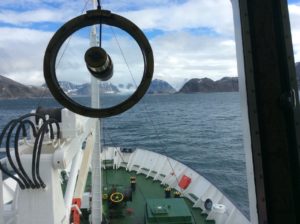
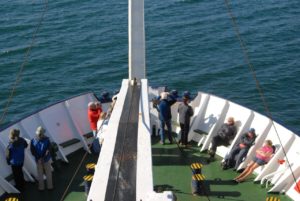


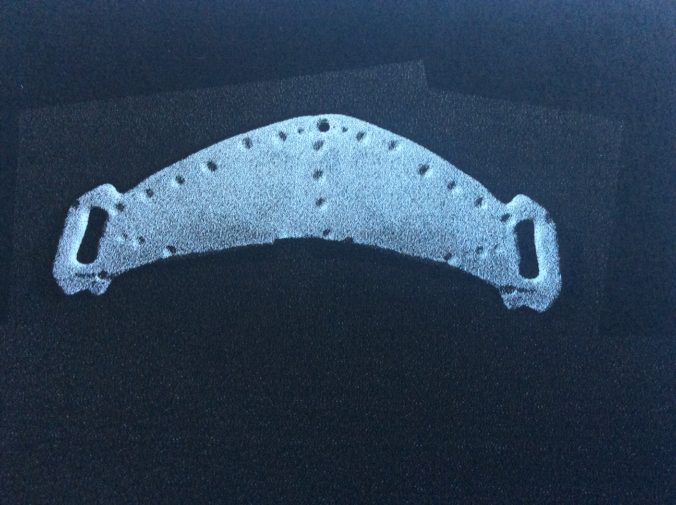

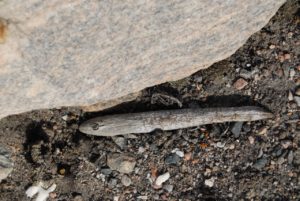

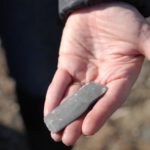

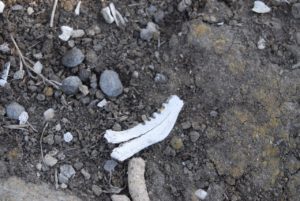
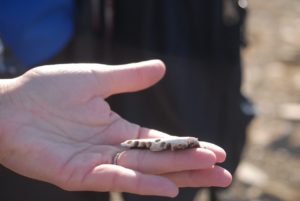
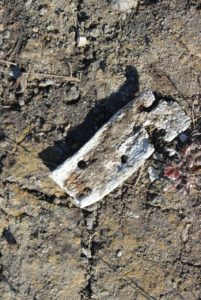

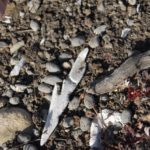
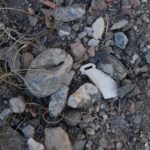

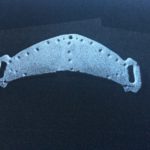
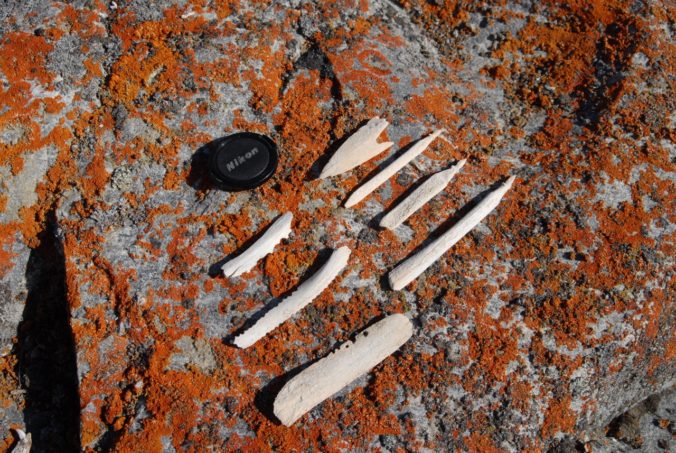
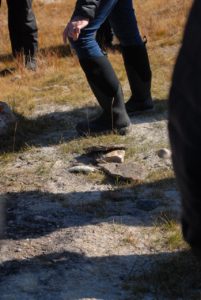
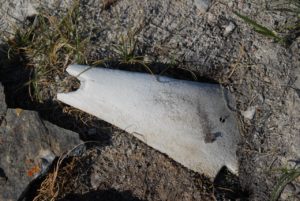
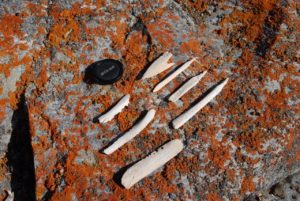
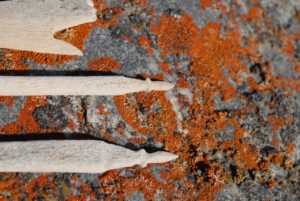

Recent Comments